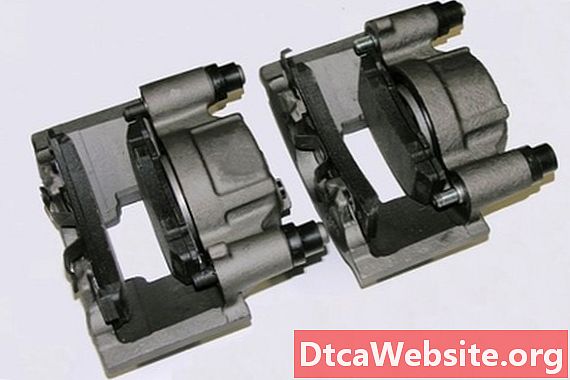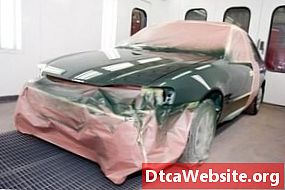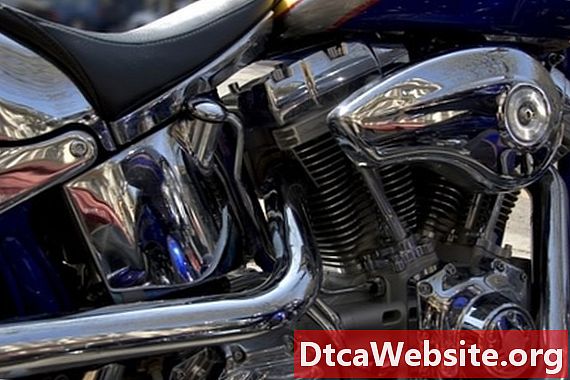
Contenu

The brake master cylinder and reservoir works in conjunction with the power brake booster. The master cylinder reservoir holds brake fluid that travels to the wheel cylinders and calipers under high pressure when the brake pedal is applied. A piston and cylinder within the master cylinder forces fluid through the lines. The seals within the master cylinder must hold up against the pressure, remaining leak-proof. Master cylinders can give warning signs when they approach failure. A competent vehicle owner can detect these symptoms by checking the condition of a few parts and systems.
Step 1
Place the vehicle in park or neutral with the emergency brake set. Keep the battery cables connected. Start the engine, and feel the response of the brake pedal as you press it down and release it. A spongy or "airy" pedal will be the first indication the master cylinder cannot hold the proper pressure required. The pedal should be firm at idle and during normal cruising. A brake pedal that falls to the floor under constant pressure indicates a leaking seal in the master cylinder.
Step 2
Check for a brake pedal that travels to the floorboard with little or no rebound. If the master cylinder reservoir has the proper amount of the fluid, but the pedal goes to the floor, it indicates a bad internal seal inside the master cylinder body. You must determine which seal has failed.
Step 3
Make a visual inspection of the master cylinder. Check the fluid reservoir level by removing the metal or plastic cap. The brake fluid level should appear at least 1/4 inch from the top lip of the reservoir. If its low, fill it to the top with the manufacturers recommended type of brake fluid. Check the front and back metallic brake lines that fit into the side of the master cylinder body for any leakage at the fittings. Use a fuel line wrench to tighten loose fittings.
Step 4
Use a fuel line wrench to remove both metallic brake lines from the master cylinder. Screw in two threaded plugs to the line fittings. Look behind the wheel, and check the brake pedal response by pumping the pedal up. If you have firm brake pedal response, the problem does not lie with the master cylinder. Connect one brake line to the rear of the master cylinder, and leave the front plugged. If the brake pedal travels to the floor with repeated pressure, the rear seal on the master cylinder has blown.
Connect the front brake line to the master cylinder, and leave the rear fitting plugged. If the brake pedal falls to the floor with extended pressure, it means the rear master cylinder seals leaks. When the rear master cylinder seal leaks, brake fluid will show visibly on the back of the master cylinder body and on the power brake booster front. Brake fluid degrades and crinkles paint -- any crinkled paint on the front of the brake booster indicates a blown rear seal in the master cylinder.
Items you will need
- Fuel line wrenches
- Master cylinder plugs (threaded)


